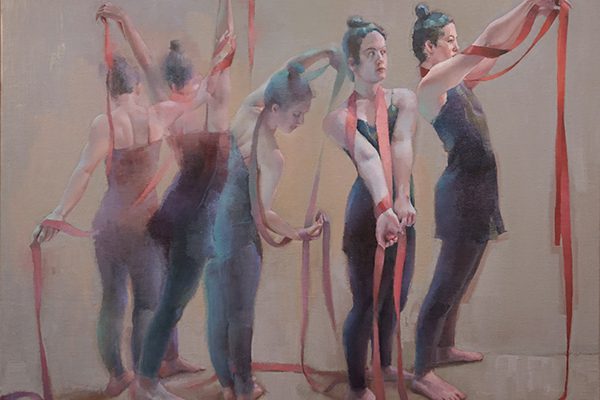




Slow art day
Before we all had a lot more time on our hands, most people only spent an average of 10 seconds looking at a single painting. While this event is usually celebrated in museums around the world, this year it is being held exclusively online, rather than in person, so everyone can participate from the comfort of their own homes.
Embrace The Slow
The structure is simple—choose a work of art, spend five to ten minutes engaging with it, and discuss your experience with friends or join the conversation using #slowartdayOMA on social media. Simple by design, the goal is to focus on the art and the practice of seeing.
Tour the Slow Art gallery below featuring works of art from OMA’s Artist Alliance 2019 Biennial exhibition and engage with each piece on a deeper level through thought provoking questions and activities designed for all ages.
Slow Before You Go
Before you begin your Slow Art experience, click here to watch a one-minute mindfulness exercise video provided by GoZen to focus yourself on the task at hand.
Ready, Set, Slow!
As we are all in isolation, what better time to contemplate community and our place within it.
Click here to explore Two Cardiffs Nocturne by Juan Flores with a special place of your own in mind.
Music has the power to lift our spirits in challenging times like these.
Click here and find inspiration where art and music connect in Woman and the Violin by Doriana Sinnett.
Innovation and imagination are needed now more than ever as we navigate this new normal.
Click here to see what Hold Fast by Brady Willmott inspires you to create.
Sheltering in place can feel confining.
Click here to feel how art inspires you to move with Red Ribbon by Cathy Locke.
Being tethered to home with our families gives the opportunity for time sharing stories together.
Click here to script a tale inspired by Mercedes’ The Little Prince.
Quick Tips For Looking At Art
There is no right or wrong way to look at art. But, sometimes we find ourselves in front of an artwork thinking, “Now what?”
Here are some steps you can follow—either alone or with a partner—to guide your looking.
Before you do anything else, note your first impression of the work. What immediate reaction do you have to it? Why do you think you reacted that way?
Take time to observe all the details that make up the work, such as:
- Colors, shapes, textures, and lines
- Light and shadow
- Repeating patterns
- Symmetry (or the lack thereof)
- Composition (how elements are arranged)
- Does it look realistic or has it been stylized? Think about how these elements work together to create the overall effect.
- Get up close and personal! Since you are observing artwork from a computer or mobile device, don’t be afraid to zoom in closely to really examine the details of each piece.
Based on your observations, guess what story the artwork is telling. You may not see an obvious narrative, but you can always ask yourself why the piece might have been created and what the artist may have wanted to say.
Discuss your ideas with fellow art lovers at home or with the online community using #slowartdayOMA. Remember that every artwork is open to multiple interpretations.
Reflect on your initial impressions of the work of art. Have your ideas about it changed? Do you like it more or less? What surprised you about the process of careful looking?








